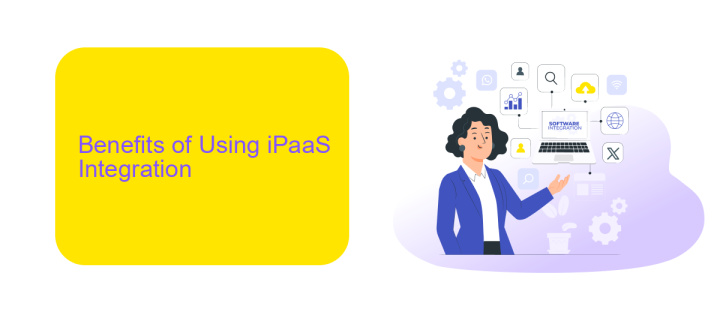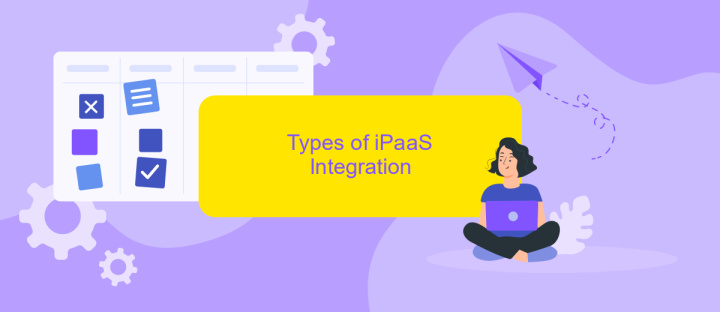iPaaS Integration
In today's rapidly evolving digital landscape, businesses are increasingly turning to Integration Platform as a Service (iPaaS) solutions to streamline their operations. iPaaS offers a unified platform to connect disparate systems, applications, and data sources, enabling seamless integration and enhancing efficiency. This article explores the key benefits, features, and considerations for adopting iPaaS in your organization.
What is iPaaS Integration?
Integration Platform as a Service (iPaaS) is a cloud-based solution that enables the seamless integration of various applications and data sources. It provides a unified platform for connecting disparate systems, automating workflows, and ensuring data consistency across an organization. iPaaS solutions are designed to simplify the integration process, making it accessible to both technical and non-technical users.
- Automates data synchronization between applications
- Offers pre-built connectors for popular software
- Facilitates real-time data exchange
- Ensures secure and scalable integrations
- Reduces the need for custom coding
One notable example of an iPaaS solution is ApiX-Drive, which offers an intuitive interface for setting up integrations without requiring extensive technical knowledge. ApiX-Drive supports a wide range of applications, enabling businesses to streamline their operations and enhance productivity. By leveraging iPaaS, organizations can achieve greater agility and efficiency in managing their digital ecosystems.
Benefits of Using iPaaS Integration

Integrating iPaaS (Integration Platform as a Service) into your business operations offers numerous benefits, including streamlined processes and enhanced efficiency. By centralizing various applications and data sources, iPaaS eliminates the need for manual data entry and reduces the risk of errors. This leads to faster decision-making and improved productivity. Additionally, iPaaS solutions are scalable, allowing businesses to grow without facing integration bottlenecks. They also offer real-time data synchronization, ensuring that all systems are up-to-date and accurate.
Another significant advantage of using iPaaS is the ease of integration it provides. Services like ApiX-Drive enable businesses to set up integrations quickly and effortlessly, without requiring extensive technical knowledge. This not only saves time but also reduces costs associated with hiring specialized IT staff. ApiX-Drive offers a user-friendly interface and a wide range of pre-built connectors, making it easier to integrate various applications and automate workflows. This flexibility allows businesses to adapt to changing needs and stay competitive in a dynamic market.
Types of iPaaS Integration

iPaaS (Integration Platform as a Service) offers various types of integrations to streamline business processes and improve data flow. These integrations can be broadly categorized based on their functionality and use cases.
- Application Integration: This type connects different software applications to ensure seamless data exchange. For instance, integrating CRM systems with email marketing tools.
- Data Integration: This focuses on consolidating data from various sources into a unified view. It is crucial for analytics and reporting purposes.
- Process Integration: This involves automating workflows across multiple systems, improving efficiency and reducing manual intervention.
- B2B Integration: This type enables businesses to connect with their partners, suppliers, and customers, facilitating smoother transactions and communications.
- API Management: This involves managing and integrating APIs to allow different applications to communicate effectively.
Platforms like ApiX-Drive simplify the setup and management of these integrations by providing user-friendly tools and pre-built connectors. This enables businesses to quickly adapt and scale their integration strategies without extensive technical expertise.
Challenges of Implementing iPaaS Integration

Implementing iPaaS (Integration Platform as a Service) can present several challenges for organizations. One of the primary difficulties lies in the initial setup and configuration of the platform. This process often requires a deep understanding of both the existing IT infrastructure and the iPaaS solution itself. Ensuring compatibility and seamless integration with legacy systems can be particularly daunting.
Another significant challenge is data security and compliance. As data moves between various applications and systems, maintaining its integrity and ensuring it meets regulatory requirements is critical. Organizations must implement robust security measures and constantly monitor data flows to prevent breaches.
- Complexity in initial setup and configuration
- Ensuring compatibility with legacy systems
- Maintaining data security and compliance
- Managing ongoing maintenance and updates
To address these challenges, leveraging tools like ApiX-Drive can be beneficial. ApiX-Drive simplifies the integration process by offering a user-friendly interface and pre-built connectors for various applications. This can significantly reduce the complexity of setup and help ensure smooth, secure data transfers across systems.
Best Practices for Successful iPaaS Integration
To ensure successful iPaaS integration, it is crucial to start with a clear understanding of your business requirements and integration goals. Identify the key processes and data flows that need to be integrated, and map out how these will interact within your existing systems. This preparation phase helps in selecting the right iPaaS solution that aligns with your business needs. For instance, ApiX-Drive offers a user-friendly interface that simplifies the integration process, making it easier to connect various applications without extensive coding knowledge.
Another best practice is to implement a robust monitoring and maintenance strategy. Regularly review and update your integrations to ensure they are functioning correctly and efficiently. Utilize the monitoring tools provided by your iPaaS platform to track performance and quickly address any issues that arise. ApiX-Drive, for example, provides comprehensive monitoring features that allow you to keep an eye on your integrations in real-time, ensuring seamless data flow and minimizing downtime. By following these practices, you can optimize your iPaaS integrations for maximum efficiency and reliability.


FAQ
What is iPaaS?
How does iPaaS benefit my business?
Can iPaaS integrate both cloud-based and on-premises applications?
Is iPaaS suitable for small businesses?
What kind of integrations can be set up using iPaaS?
Strive to take your business to the next level, achieve your goals faster and more efficiently? Apix-Drive is your reliable assistant for these tasks. An online service and application connector will help you automate key business processes and get rid of the routine. You and your employees will free up time for important core tasks. Try Apix-Drive features for free to see the effectiveness of the online connector for yourself.

